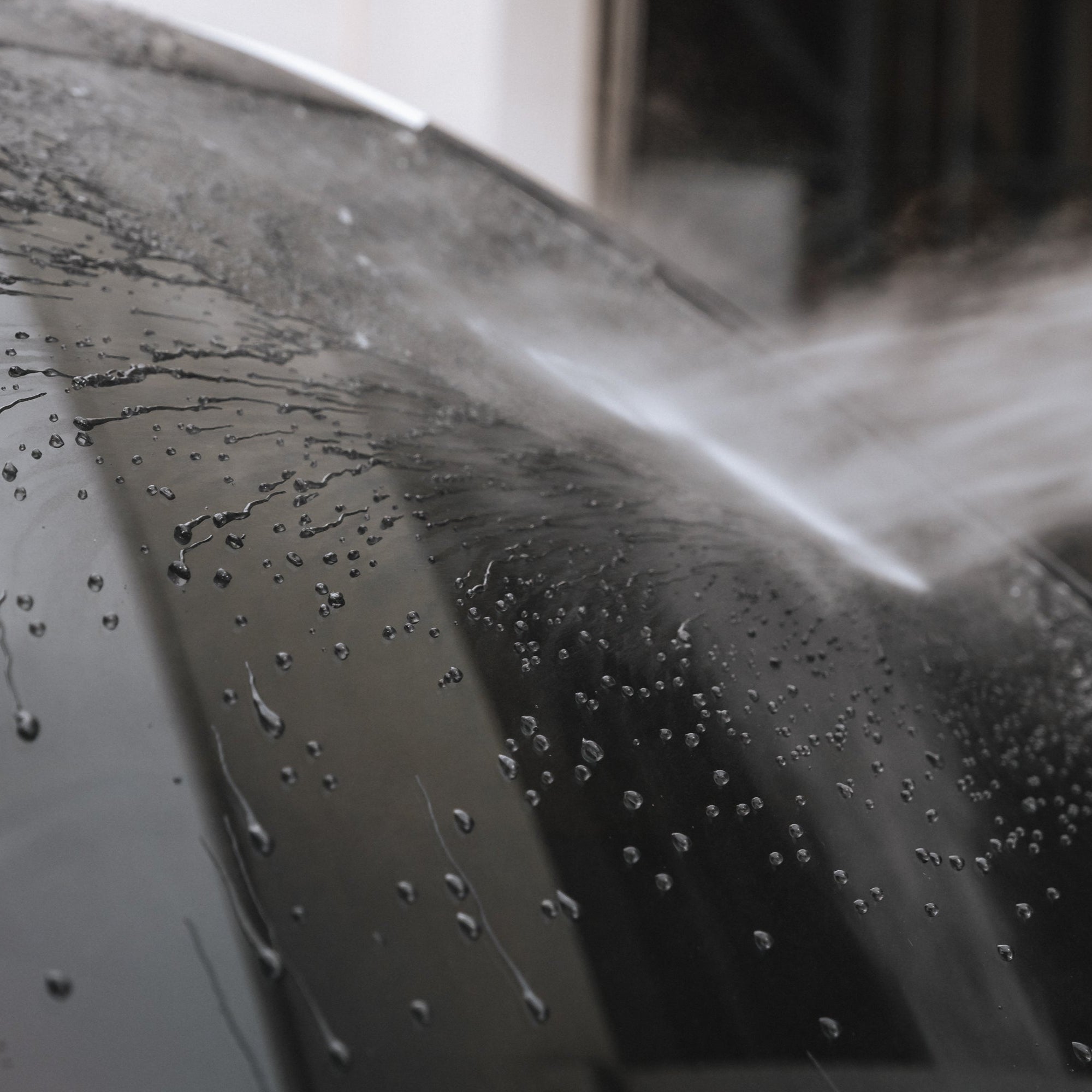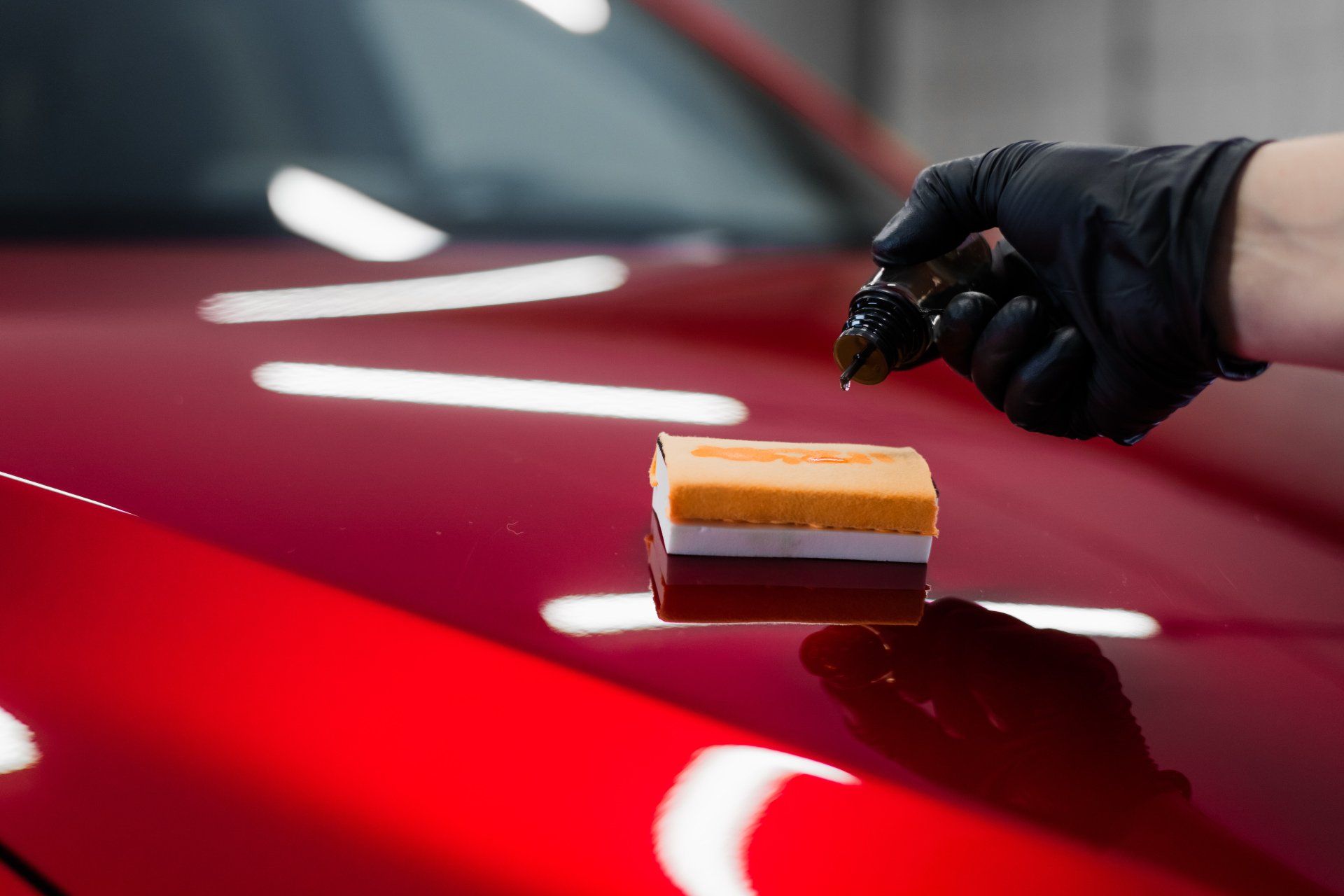Ceramic Coating vs. Sealants: Understanding the Differences for Your Vehicle
Ceramic Coating vs. Sealants: Understanding the Differences for Your Vehicle
Blog Article
The Value of Ceramic Coating: Safeguarding Your Vehicle's Outside With Accuracy
In a period where maintaining the useful and visual integrity of your car is vital, ceramic coating arises as a critical option. With its unique bonding buildings, ceramic coating provides a degree of protection that far surpasses conventional waxing approaches.
Advantages of Ceramic Coating
When it comes to preserving an automobile's aesthetic appeal, ceramic coating supplies significant advantages. By creating a semi-permanent bond with the automobile's paint, ceramic finishes efficiently prevent oxidation and fading, ensuring that the vehicle keeps a shiny, showroom-like surface for an extended duration.
Along with its protective high qualities, ceramic coating supplies exceptional hydrophobic buildings, triggering water and other liquids to grain off effortlessly. This attribute streamlines the cleaning procedure, as dirt and particles are less most likely to stick to the surface area, decreasing the frequency and effort needed for maintenance. The finishing's resistance to chemical discolorations from acidic pollutants like bird droppings and tree sap is an additional notable advantage, minimizing prospective paint damage.
Ceramic layers likewise boost scrape resistance, offering a layer that can soak up minor abrasions and swirl marks. This attribute is especially beneficial in preserving an immaculate surface, decreasing the chance of visible flaws and maintaining the integrity of the cars and truck's paintwork with time.

How Ceramic Covering Functions
Recognizing the technicians behind ceramic layer discloses its efficiency as a protective solution for cars. Ceramic coatings are essentially liquid polymer applications that chemically bond with a cars and truck's manufacturing facility paint, developing a safety layer. This layer acts as a barrier against environmental impurities such as ultraviolet, dust, and crud rays, which can break down an auto's outside over time. The key component in ceramic finish is silicon dioxide (SiO2), which stems from quartz crystals and is understood for its exceptional solidity and durability.
Application of ceramic covering entails a precise procedure. This guard improves the auto's gloss and hydrophobic homes, facilitating much easier cleansing by triggering water and contaminants to bead and slide off easily.
Furthermore, the layer's molecular structure offers resistance to minor scratches and chemical discolorations. Unlike waxes or sealants that sit on top of the paint, ceramic finishes integrate with the surface, offering resilient defense. This integration is essential to its performance, ensuring the car's surface stays beautiful for many years.
Comparing Ceramic Coating to Alternatives
In the realm of vehicle defense, ceramic layer stands as an awesome option when contrasted to traditional alternatives such as sealants and waxes. While waxes offer a temporary lustrous coating, usually lasting only a few weeks to months, ceramic coverings provide a longer-lasting solution, frequently sustaining for several years. This durability is attributed to the chemical bonding that takes place when ceramic coatings are used, creating a solid layer that is immune to ecological dangers.
Contrastingly, sealants, although more resistant than waxes, still disappoint the robust protection supplied by ceramic layers. Sealers can typically last for as much as a year, giving an artificial shield versus specific elements. However, they lack the remarkable hydrophobic properties and UV security that ceramic coverings deliver.
Moreover, ceramic finishes supply improved scrape resistance, which neither waxes neither sealants can efficiently match. In summary, while typical waxes and sealers offer standard defense, ceramic coverings provide a detailed, lasting remedy that significantly preserves the vehicle and enhances's exterior finish.
Application Process Described
Applying ceramic layer to an automobile needs a precise procedure to make sure ideal results and durability. As soon as cleaned up, the vehicle is dried out and polished to click here now get rid of any blemishes, as any type of existing swirls or scratches look at this website can become a lot more noticable after the finishing is used.
Adhering to surface preparation, the application of the ceramic layer begins. Making use of an applicator pad, the ceramic finishing is used in tiny sections to guarantee also coverage.
After application, the layer requires a particular healing duration, during which the car needs to be safeguarded from water and impurities. This healing process can vary depending upon the item yet typically varies from 24 to 2 days. Inevitably, this detailed process is critical in accomplishing a resistant and glossy surface.
Maintenance Tips for Durability
To maintain the long life of a ceramic finish, adherence to a self-displined upkeep regimen is necessary. Prevent automatic vehicle washes, as their harsh brushes can endanger the layer's integrity.
Post-wash, drying out the lorry with a tidy microfiber towel avoids water spots that may weaken the coating in time. In addition, use a ceramic finishing booster every few months. These boosters reinforce the hydrophobic homes and boost the coating's safety abilities, ensuring it continues to be efficient versus pollutants.
Maintain in mind that auto parking areas play a critical function in upkeep. ceramic coating. Whenever possible, park in shaded areas to lessen UV exposure, which can progressively compromise the coating. For long-lasting storage, think about using an auto cover for included defense versus ecological aspects
Conclusion
In verdict, ceramic layer offers as an essential protective layer for lorry exteriors, offering lasting defense against environmental elements such as uv, crud, and dust rays. Understanding the application procedure and sticking to upkeep suggestions are important for maximizing the longevity and performance of ceramic coating.
When it comes to preserving an automobile's aesthetic appeal, ceramic layer supplies substantial benefits. By developing a semi-permanent bond with the vehicle's paint, ceramic coverings efficiently avoid oxidation and Get More Info fading, making sure that the cars and truck preserves a glossy, showroom-like coating for a prolonged period. Ceramic finishes are essentially liquid polymer applications that chemically bond with a vehicle's manufacturing facility paint, producing a protective layer. In recap, while conventional waxes and sealants provide basic defense, ceramic finishings present a thorough, long-lasting solution that dramatically boosts and protects the vehicle's exterior surface.

Report this page